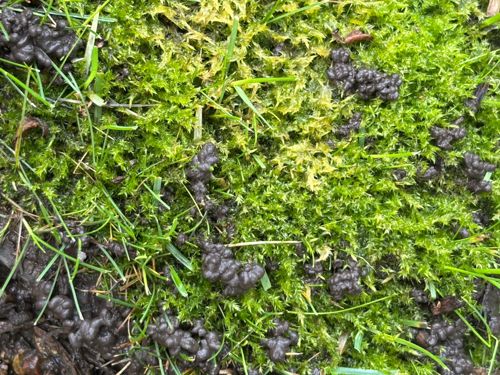Nostoc / Star Jelly (a common name for the gelatinous masses) / Witch's Butter (another common name often used for similar gelatinous substances)
Scientific Name: Nostoc commune (a common species often found in these forms, though other Nostoc species can look similar)
Order & Family: Order: Nostocales, Family: Nostocaceae. (Note: These are classification for cyanobacteria, not insects.)
Size: Individual cells are microscopic, but the colonies can range from a few millimeters to several centimeters or even decimeters across when fully hydrated and expanded into gelatinous masses.

Natural Habitat
Nostoc commonly grows in terrestrial environments, often found on moist soil, rocks, in ponds, and even on damp moss or grass, as seen in the image. It thrives in areas with good moisture availability and sunlight.
Diet & Feeding
As cyanobacteria, Nostoc obtains its energy through photosynthesis, using sunlight, carbon dioxide, and water. Some species are also capable of nitrogen fixation, converting atmospheric nitrogen into a usable form.
Behavior Patterns
Unlike typical insects, these are not animals but rather cyanobacteria. They are known to form colonies that can appear as gelatinous, dark masses, especially after rain or in damp conditions. They can dry out and become brittle in dry spells but will rehydrate and become gelatinous again when wet. They contain chlorophyll and perform photosynthesis.
Risks & Benefits
Generally, Nostoc is not considered harmful to humans or animals. It can be a nuisance in lawns or on hard surfaces due to its gelatinous appearance. However, Nostoc plays a beneficial ecological role, especially in nitrogen-poor soils, due to its ability to fix atmospheric nitrogen, contributing to soil fertility. Some species are consumed in various cultures.
Identified on: 8/10/2025